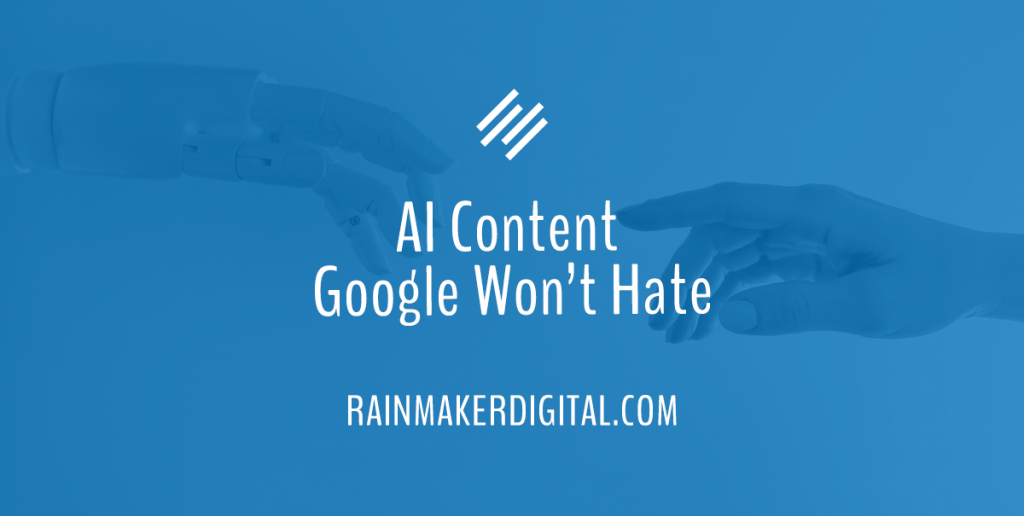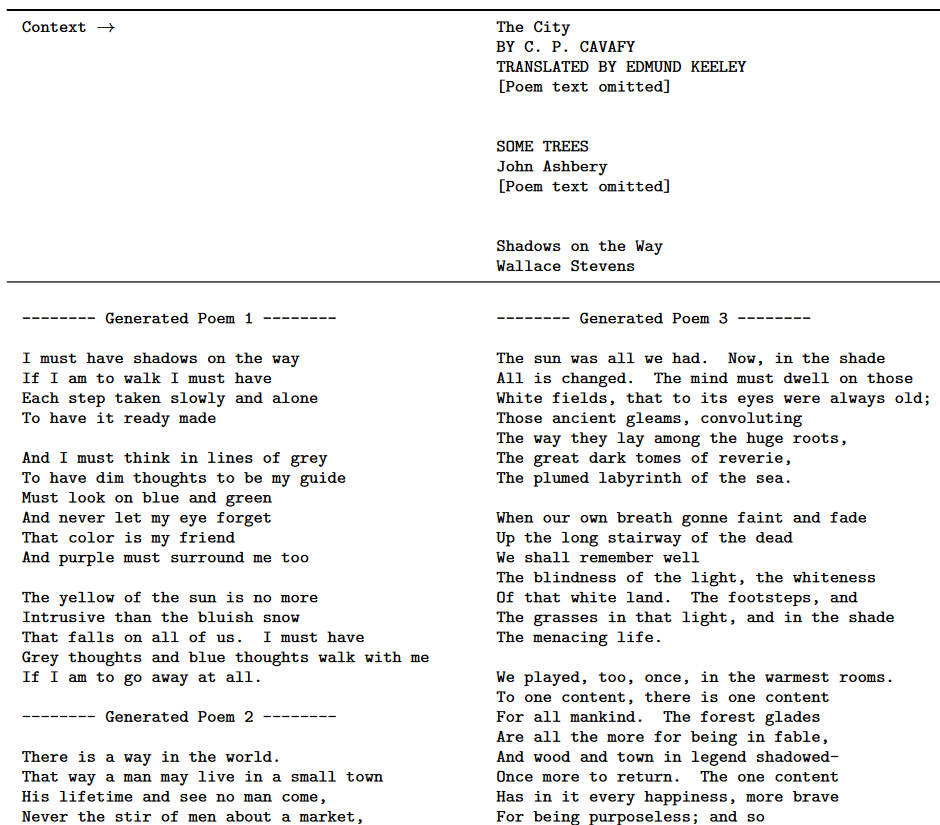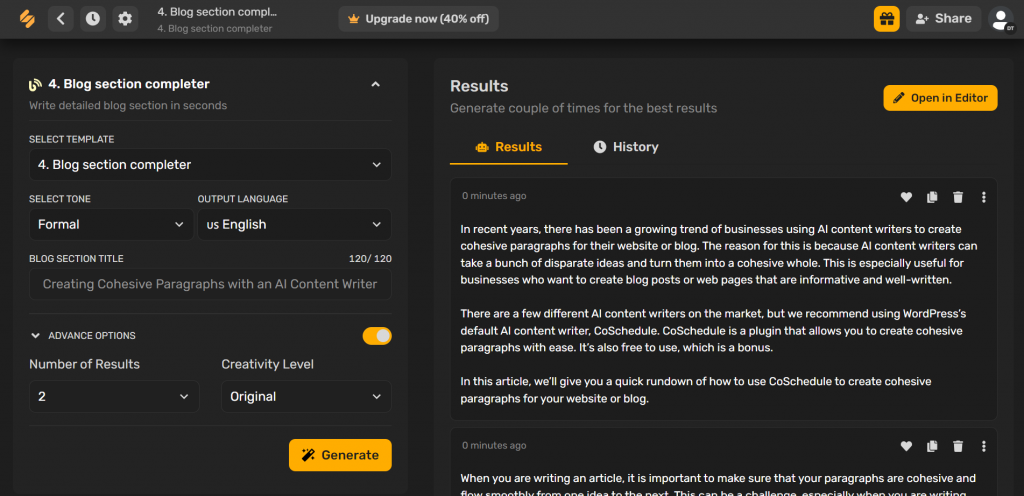
Artificial Intelligence (AI) content is becoming common on the Internet today.
These tools can now generate readable content that can trick both human marketers and search engines. When I was researching for this article, I was actually surprised to see how much AI content had improved; some of the new AI writers are shockingly good.

I’ve written and read a fair bit of poetry myself. This gets disjointed at times — but I’ve read worse from a lot of amateur poets. It’s not what you’d expect from an AI.
Google’s recent helpful content update is a reaction to these AI improvements. Even before AI, it was easy to crank out content for quantity instead of quality; these writing aids only make that easier.
Google wants helpful content to rank higher — a lot of the mass-produced content that ranks right now on the SERP isn’t actually that useful. AI on its own can’t create helpful content, and many authorities (ourselves included) think a lot of AI content will be pushed down the SERP. How does AI affect your search rankings?
What Exactly Is AI Content?
First we need to define what exactly we’re calling “AI content.”
AI content is exactly what it sounds like: content created by a content engine. There are different levels of “created.” Some of this content is almost all machine-made. Other pieces were made with minimal assistance to the human writer — helping with phrasing, suggesting possibilities.
These content engines are only possible because of recent leaps in technology. The biggest leap we’ve seen in recent years is the 3rd Generative Pre-trained Transformer model (GPT-3), which uses 175 billion machine learning parameters to create content. This technology is the foundation of most of the modern AI writing tools, including Jasper and Grammarly. The next generation model, GPT-4, is coming soon, and it will be even better.
I know a couple of writers who use AI to help write their pieces. One works in basketball; he has published pieces on several well-known sports sites. He’s good, and if you didn’t know he was using an AI tool to help, you’d never be able to tell.
On the other hand, I’ve seen plenty of AI writing that was obviously barely touched by a human. Odd phrasings, non sequiturs and generalities abound. This is especially obvious in content that comes from the “quantity over quality” content mills (and yes, they do still exist). Humans still need to be involved.
What Are the Shortcomings of AI Content?
AI is powerful, but it’s not a silver bullet. One of the biggest weaknesses of AI content generators is that their models use older data that may not be current. “Garbage in, garbage out” is an old programmer saying that applies here. It means that if the input you’re working with is wrong or incomplete, the end result won’t be worth much either.
The data being used by the major AI content providers is excellent, but the output you get is limited to what the AI model can predict from its source material. AI is good at building content based on what already exists, but it’s bad at building content about trends it can’t predict or doesn’t know about. It won’t create something unique or original — it’s good at perspiration, not inspiration.
When you use an AI tool to create a piece of content, you first input a piece of source content (for example, a headline, a paragraph or a topic). You then add context to it — targeted reading level, tone, length. Finally, you ask the AI to generate the content. Different AIs will have different options, and paid providers will offer more options than free.
Here’s a test piece I generated on Simplified:

Notice it’s pushing a specific tool in the first paragraph — most likely, this is a common recommendation the AI saw in its data set.
This text is clunky but serviceable. With a little effort I could make it work. But it’s fluffy, and it talks in generalities. Even though the “Creativity Level” is set to “Original,” it feels anything but unique.
How Does AI Affect Search Rankings?
Google’s explanation of its recent helpful content update starts off with this paragraph:
“Google Search is always working to better connect people to helpful information. To this end, we’re launching what we’re calling the “helpful content update” that’s part of a broader effort to ensure people see more original, helpful content written by people, for people, in search results.” [emphasis ours]
By people, for people. That’s part of Google’s focus.
This current state of content isn’t just the fault of AI. I first started looking into content marketing toward the tail end of the link farm era. People were getting paid $10 a piece to crank out low-effort articles filled with keywords, meant to build rankings and backlinks. Now, companies can brute force quantity content by just paying an AI company.
This practice isn’t even recommended by the AI companies themselves. As Jasper CEO Dave Rogenmoser notes, “If your AI-written content is low quality and doesn’t help readers, it’ll get dinged. If your HUMAN written content is low quality and doesn’t help readers, it’ll get dinged. How do you make sure you’re safe? Know your intended reader deeply. Write content that solves their needs and answers their questions.”
The same piece explains that extensively-automated content isn’t recommended, and that AI is best used to supplement research that’s already been done. Heavy use of AI with little human adjustment is a good way to turn off Google and people alike.
The Goal is the Problem
AI isn’t the problem. Marketers looking at the wrong goal is the problem.
Understand this: if you’re focusing on cranking out quantity over quality, Google wants to get rid of you. Their stated reason for algorithm updates like the helpful content update is to push useful, helpful, original content to the top. If we cannot provide a genuine benefit to the people we reach, Google does not want us to rank.
AI content can inform, but can it be useful?
We’re not against using AI as a writing aid. We are against low-quality content. And if you use AI irresponsibly to crank out low-quality content on subjects you think will rank well, Google will hurt you. So how do you avoid that?
Be Useful, Not Just Informative
AI (and quantity-focused writing with AI help) can make good content. But it can’t create great content. To do that, you have to focus on more than just informing, whether you’re writing the piece by yourself or getting AI help. You need to be useful.
Yes, And …
Make sure you answer your audience’s questions. That’s good SEO. But don’t stop there.
There’s a principle of improvisational comedy called “yes, and …” which applies to SEO too. It means building on whatever scenario your scene partner gives you.
In the case of SEO, this means answering the original search query, then offering them something extra that fits with their intent.
If I search for “how to fix low water pressure in shower head” (which I did recently), I definitely want to know what’s causing it and how to fix it. But if there’s also information on how to keep it from happening again, that’s incredibly helpful for me too — and not a lot of sites will offer that extra information.
Another example: if I search “how to assemble snare drum,” I want something that answers the question. But if I’m struggling with that, there’s a good chance I might need a hand with the rest of my drum kit too. Linking out to a few other articles that explain how to set up my kit is a great way to “yes, and …” the original query.
Don’t leave your audience hanging so they need to do a follow-up search. “Yes, and …” their query to deliver value, build engagement and improve search ranking.
Add Context
Good research is one of the biggest things AI can’t do for content writers.
Take the time to anchor your piece in research. Whether that’s quoting statistics from other sites, mining your own customer base for data or pulling quotes from an interview, you need to ground it in facts and logic. These sources give context for the point you’re making and cement your authority, and if you’re using an AI assistant, it can be the difference between fluff and foundation.
Using research to add context helps you build backlinks and bump up engagement: both things Google is looking for on the SERP.
Tell Stories
Stories engage our attention and keep us coming back. They help us remember points better. And if you’re not using them in your content, you’re probably missing out on return visits — which are very important to your SEO.
If you used AI to write an article about choosing your own lane as a brand, it would probably come up with platitudes about the importance of uniqueness, why brands matter and what good branding can do for your company.
None of that tells a unique story or ties it to your own brand.
Eddie Schleyner’s approach is far more effective: in 349 words, he lays out all those points by telling the story of AND1 versus Nike.
Simple. Interesting. Effective. And human. All things that Google likes — because people like them too.
AI vs. Google
Is AI content in the crosshairs?
No. But lazy content is.
Google wants to get rid of content that doesn’t bring anything new to the table, whether it’s AI or people creating it. AI’s just the tool — don’t blame the tool, blame the hand holding it.
Want to succeed over the long term? Create useful content. Don’t just reword someone else’s thoughts. If you use AI to help, that’s fine, but make it real and uniquely yours. Serve your audience and your content will succeed, no matter who’s writing it. And if you need a hand, reach out. We’re here to help.
Best Regards,
David Brandon
Copywriter
Rainmaker Digital Services